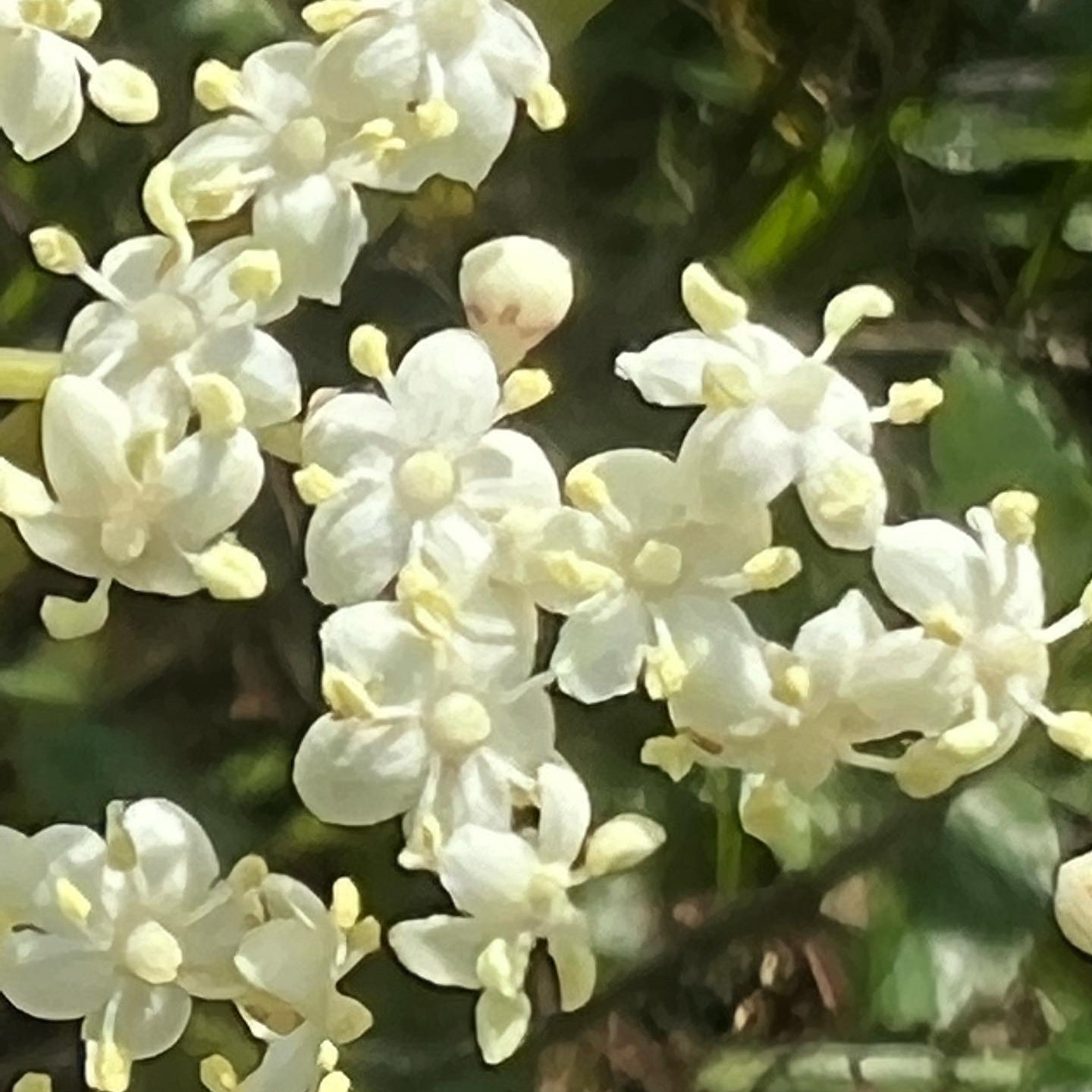Elderberry blossoms are a prominent sight along roadsides this time of year, marking the beginning of summer but also a cue to make one of my favorite refreshing drinks – Elderflower Cordial.
And no, cordials are not alcoholic, as many folks think when I mention making it. Cordial means “sweetened drink” – look it up! Dictionaries are wonderful things. Rant over.
Americans are actually behind on discovering the value of Elderberry blossoms and berries as yummy and medicinal. Europeans have been using cordials and syrup made with both for centuries, dating back to Roman times. The flowers and berries (theirs and our species) pack antioxidants and vitamins that purportedly boost one’s immune system. Some say Elderberry is also antiviral, preventing or lessening colds and flu symptoms. I imbibe for both reasons and that is just the start of what you can do with Elderflower cordial.
The following recipe is a modification of any number that you can find on the web. I like simple methods and this one is just that.
Ingredients
- 20 Elderberry blossom heads (with all or most of the small flowers opened)
- 2 teaspoons of citric acid (available in the canning section of grocery stores)
- 7 cups refined sugar (yes, all of that – needed as preservative)
- 5 cups of boiling water
- 1 sliced lemon (optional)

Instructions
- Begin by pulling the open flowers from the flower heads. It is OK to take the smaller green pedicels. Discard the larger parts of the flower heads. NOTE: avoid the large stems and leaves that are slightly toxic.
- Place the flower heads in a large bowl that will hold up to eight cups of water.
- Add the sugar and citric acid.
- Pour 5 cups of boiling water over the mixture and stir to completely dissolve the sugar.
- Add a lemon if you like. I leave it out, as the taste and smell of Elderberry is fine on its own.
- Cover the bowl with a towel and leave on the counter for up to five days, stirring the mixture 2-3 times a day.
- Strain the mixture through a sieve or cheese cloth and place in glass or plastic bottles.
Fresh cordial will last a few weeks in the refrigerator. For longer shelf life, freeze the mixture in small containers (12-16 oz) that can be pulled out when needed (transferred to your refrigerator). Your cordial will be the consistency of syrup and is typically diluted when used, so a little bit goes a long way. Frozen cordial can last up to a year. Be aware that the sugar content prevents cordial from completely freezing. Each batch of cordial using this recipe results in 6-8, 16-ounce cups. I usually make 2 batches that last me a year.
To use, dilute your syrup with 5 parts water (plus or minus to your own taste). Sparkling water makes an even more refreshing drink. You can also pour undiluted cordial over ice cream or pancakes. For the more adventurous of you, cordial can be the basis of a good white wine.
Besides cordial, the fresh or dried flowers also make a delightful hot tea, with a light sweet smell and taste. Across the South, whole flower heads are also lightly battered and fried – “Irish Pancakes,” according to my Irish friend Dirk Kavanagh.
So, get out there and enjoy the culinary and health benefits of one of our most prolific native plants. A recipe for syrup made from the ripe berries coming this fall.
Hope to see you in our great outdoors!